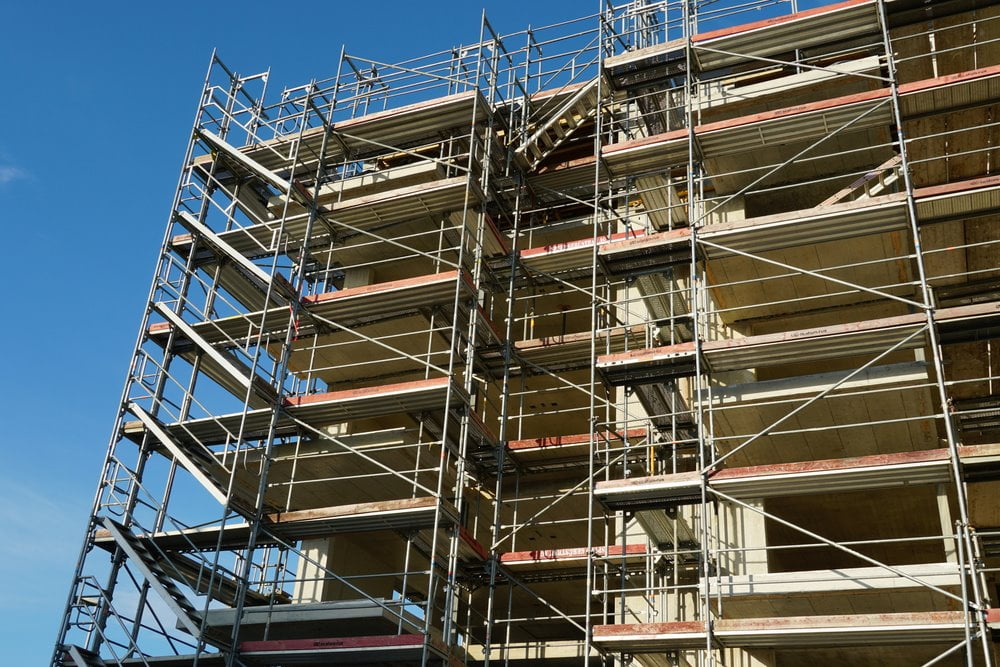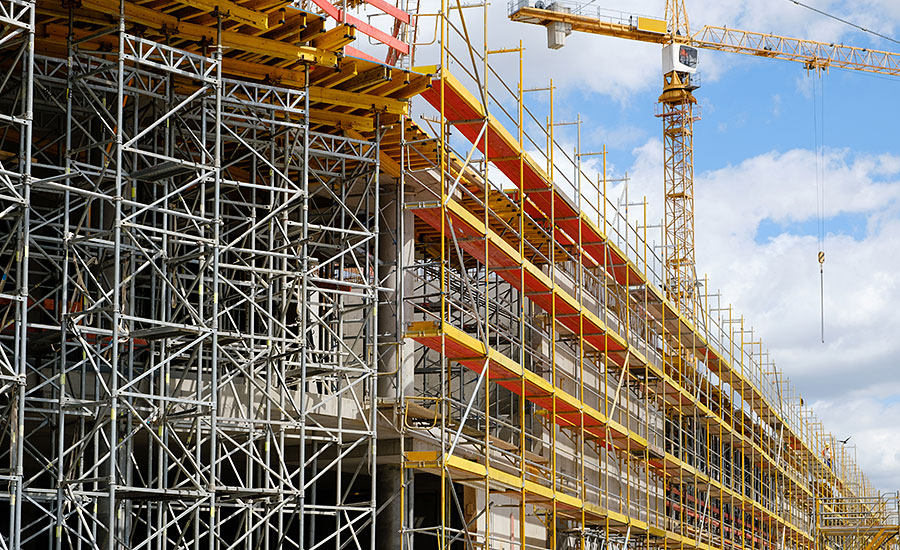Temporary Roof Scaffolding Experts Providing Secure and Reliable Installations
Temporary Roof Scaffolding Experts Providing Secure and Reliable Installations
Blog Article
Checking Out the Numerous Sorts Of Scaffolding Used in Building And Construction Jobs
The building and construction sector counts heavily on various sorts of scaffolding to satisfy specific job demands, each offering distinct advantages and applications. Standard frame scaffolding gives a durable foundation for basic tasks, while suspended scaffolding is necessary for service skyscraper structures. Other options, such as system and rolling scaffolding, accommodate efficiency and mobility, specifically. The cantilever alternative proves vital in city settings where area is constrained. Comprehending the nuances of these scaffolding types is crucial for enhancing safety and security and performance on building and construction sites, triggering a more detailed assessment of their unique attributes and applications.

Conventional Framework Scaffolding
Standard structure scaffolding is just one of one of the most commonly used approaches in the building sector as a result of its robustness and versatility. This system consists of vertical and horizontal frames that are constructed to create a secure platform for employees and materials. The primary components consist of vertical articles, straight journals, and diagonal braces, which with each other give a solid structure that can sustain significant tons.
Among the essential benefits of conventional frame scaffolding is its flexibility to different construction tasks, ranging from household structures to big business frameworks. The modular layout enables for easy setting up and disassembly, making it reliable for both long-term and temporary jobs. Furthermore, the system can be customized in height and size, accommodating various building designs and site conditions.
Safety is extremely important in scaffolding applications, and traditional structure systems are equipped with guardrails and toe boards to avoid drops and make certain worker protection. Furthermore, routine assessments and adherence to security guidelines are crucial in maintaining the stability of the scaffold. In general, conventional structure scaffolding stays a fundamental option in the building industry, giving a reliable system for labor and enhancing total project efficiency

Suspended Scaffolding
Suspended scaffolding offers an unique solution for building and construction tasks that need access to raised surface areas, particularly in situations where conventional frame scaffolding might be not practical. This kind of scaffolding is typically put on hold from the roof or top degrees of a structure, using a system of systems, pulley-blocks, and ropes to develop a working room that can be adapted to different heights.
One of the primary benefits of put on hold scaffolding is its flexibility. It can be quickly rearranged or lowered to accommodate changes in building needs, making it perfect for tasks such as home window setup, façade job, and maintenance on skyscraper structures. In addition, the minimal footprint of put on hold scaffolding enables better use ground area in city settings, where area is usually limited.
Safety is a critical consideration in the use of put on hold scaffolding. Overall, suspended scaffolding offers a effective and efficient remedy for accessing hard-to-reach locations in different building and construction scenarios, boosting both productivity and safety and security on website.
System Scaffolding
System scaffolding, commonly concerned as a modern-day solution in the scaffolding market, contains pre-engineered components that can be swiftly put together and adjusted for different construction tasks. Scaffolding. This type of scaffolding is identified by its modular layout, which permits flexibility and performance on work sites, fitting structural requirements and different heights
Commonly made from high-strength steel or aluminum, system scaffolding their website offers improved toughness and stability. The parts consist of vertical messages, horizontal ledgers, and diagonal dental braces, which adjoin firmly, ensuring a durable structure. The style frequently integrates standard fittings, simplifying setting up and disassembly procedures, thus minimizing labor time and prices.

Rolling Scaffolding
Rolling scaffolding is a versatile choice to conventional fixed scaffolding, designed for movement and ease of use on building and construction sites. This kind of scaffolding is composed of a platform supported by structures with wheels, permitting workers to easily transfer it as required. The movement feature significantly improves performance, as it decreases downtime related to dismantling and assembling taken care of scaffolding.
Typically constructed from light-weight products such as aluminum or steel, rolling scaffolding provides a durable yet mobile service for tasks requiring regular repositioning - Scaffolding. It is particularly useful in jobs such as painting, drywall installation, and electrical job, where accessibility to numerous elevations and places is necessary
Safety and security is extremely important in rolling scaffolding layout, with functions such as locking wheels to stop unexpected motion when in operation, and guardrails to secure workers from falls. Furthermore, lots of designs are flexible in height, accommodating various job requirements.
Cantilever Scaffolding

The style of cantilever scaffolding generally involves utilizing arms or braces secured to a building or structure, making it possible for the platform to prolong exterior securely. Safety and security is critical; therefore, these scaffolds should be crafted to stand up to different loads and ecological problems. Routine inspection and upkeep are vital to make sure architectural honesty and employee safety.
Cantilever scaffolding is favored for its versatility and efficient usage of area, making it a preferred choice in metropolitan atmospheres where area restrictions are typical. It facilitates simpler accessibility to high elevations, view inevitably adding to the general effectiveness of construction jobs. Just like all scaffolding kinds, proper training and adherence to safety requirements are important for employees utilizing cantilever scaffolding.
Final Thought
To conclude, the varied kinds of scaffolding used in building jobs each offer unique objectives tailored to particular site needs. Typical structure scaffolding provides security, while suspended scaffolding supplies versatility for elevated jobs. System scaffolding assists in fast assembly, and rolling scaffolding boosts mobility for differing job settings. Cantilever scaffolding successfully addresses obstacles in city settings. Recognizing these scaffolding types is crucial for enhancing safety and security and efficiency in building and construction, eventually contributing to the successful conclusion of jobs.
Typical framework scaffolding gives a durable foundation for general tasks, while put on hold scaffolding is crucial for job on high-rise structures.Moving scaffolding is a functional alternative to standard set scaffolding, designed for flexibility and ease of use on building websites. As with all scaffolding types, proper training and adherence to security standards are vital for employees making use of cantilever scaffolding.
Traditional frame scaffolding provides stability, while put on hold scaffolding supplies adaptability for raised tasks. System scaffolding promotes quick assembly, and rolling scaffolding improves wheelchair for differing work settings.
Report this page